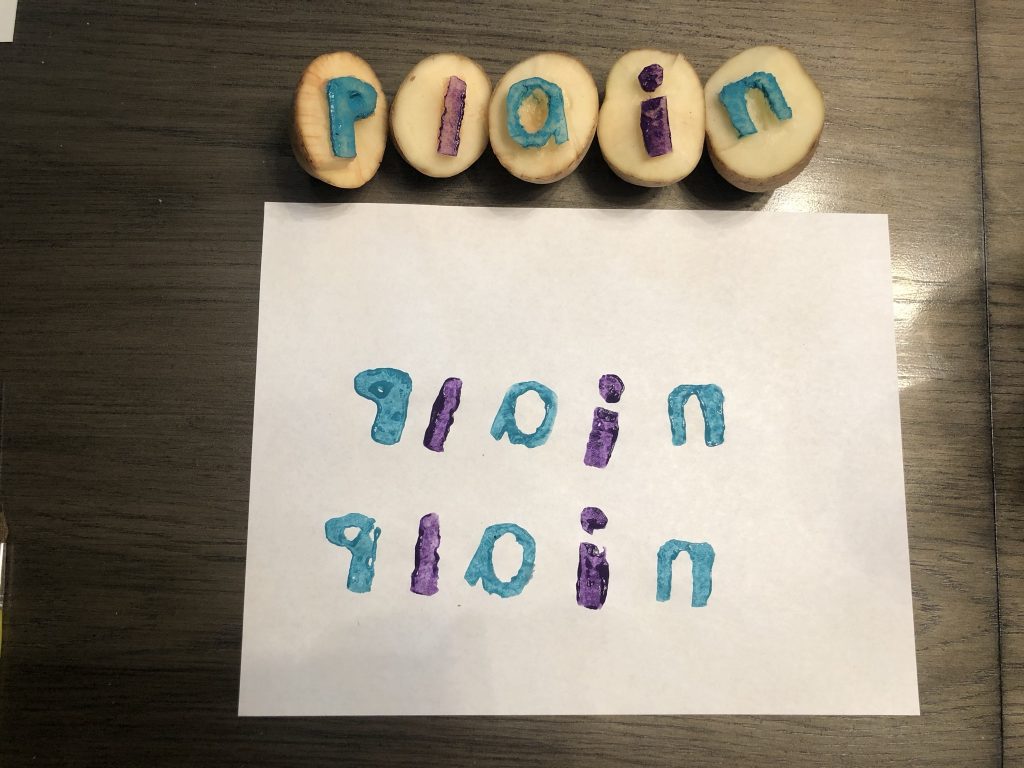This week, I enjoyed the process of crafting potato stamps! It took me roughly forty-five minutes to complete the entire task. Something that I found particularly challenging was cutting around each letter precisely using a knife. It took quite some time for me to complete this step. I chose to form the word “plain”. I noticed that the “l” and “i” were easier to design than the “p”, “a”, and “n”. These more intricate shaped letters took longer to create. Thanks to my post-work brain, before stamping the letters down, I realized that I hadn’t reversed them on the stamp in order to make them appear in the correct orientation on the paper. Oops! When painting the potato stamp, precision was important. However, as precise as I tried to be, in the end, the two stamped copies did not look identical. Though I became more precise with practice, I didn’t expect this stamping approach to be even close to the precision of a printer.

Since we use utensils to engage in the process, I understand that all writing requires mechanization and technical skill to some degree. Though the mechanization process has made text more accessible, I feel that it can take away from the beauty of the writing process. I find that I am able to be more creative and develop more thoughtful ideas when I am writing by hand, in comparison to typing on a laptop. I’d like to note that when beginning any kind of project, I always opt to brainstorm using a pen and paper. Another instance in which I would prefer to write by hand is when journaling. I’ve noticed that typing my thoughts and feelings out is very different than putting them onto paper. At the same time, I am thankful for Gutenberg and the advancement in mechanization of writing because it would be very time-consuming and tiring to write lengthy papers by hand. It sounds a bit silly, but once I had finished designing and using my potato stamps, I was very proud of my work. I wonder if this process would have felt less rewarding if I had used 3D printing technology instead.